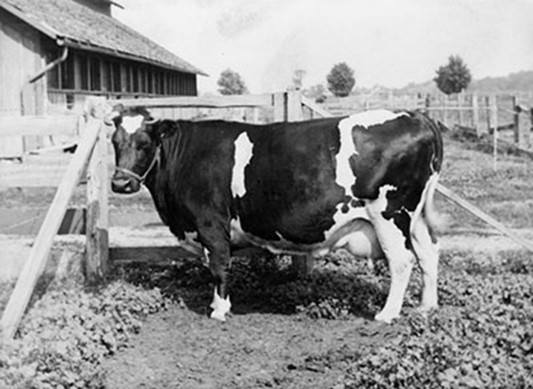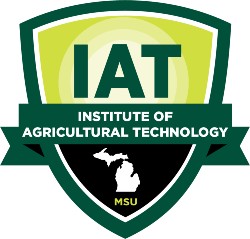The Agricultural Short Course at Michigan Agricultural College
Over a century ago, Michigan Agricultural College offered short courses to teach the latest ag knowledge. Dr. Jeno Rivera, IAT Director, reflects on what student life was like in those early programs.
A lot has changed since Michigan Agricultural College (MAC) first opened its doors in 1894 to young farmers across the state through agricultural short courses, providing Michigan residents access to the latest agriculture technology from college professors without enrolling in a four-year college program.
The original short course evolved, new courses were added to meet the needs of Michigan’s diverse farms and by 1967, the short course program was officially renamed the Institute of Agricultural Technology (IAT), reflecting its broader mission and expanding range of certificate programs.
Today, IAT enrolls hundreds of students from across the nation, both on campus and at partner locations, preparing the next generation of agricultural leaders, just as it did for others over a century ago.
However, the goals and learning experience offered to those first students still remains vital to the educational journey provided to Michigan residents through IAT.
The IAT experience continues to focus on practical, applied learning. Small class sizes, dedicated faculty and strong connections with Michigan’s agricultural industries ensure that graduates are prepared for jobs and well-linked to employment opportunities. Many students enter the workforce directly after the program, while others use their certificate as a stepping-stone to a bachelor’s degree at MSU.
As, we look back, through the eyes of a student participating in the first short course at MAC, we see the impact that practical education can have on young people in Michigan and the communities they represent.
A Season at Michigan Agricultural College: A Short Course Student’s Story
In the fall of 1894, I traveled from our family farm in rural Michigan to the gates of Michigan Agricultural College, clutching a letter of recommendation from our minister and my father’s well-worn hat. The new “short course” at the college was open to any young man of at least fifteen years and good moral character. I met the age requirement, and my father assured me that I met the other, though he said it with a wink and a warning to keep my boots clean and my word cleaner.
I was one of twenty-three boys in that first class, all farm-raised and eager to learn. We came from every corner of the state; some from prosperous dairies and others from rocky homesteads where every ear of corn was hard-won. Most of us had never been so far from home, and none had ever seen so many cattle in one place.
A Practical Education Begins
The short course was designed for farm boys like me, who needed practical skills more than Latin or Greek. Our days began early, before the sun had crested the horizon. The aroma of fresh hay and the lowing of cattle greeted us as we filed into the dairy barn, where Professor Clinton D. Smith and his assistants were already hard at work.

Professor Smith was a tall, energetic man with a booming voice and a knack for making even the most complicated tasks seem simple. He told us on the first day, “You’ll learn by doing here. Books are useful, but a man learns best with his hands in the work.” And so, we did. Each week, we spent three hours in the barns and fields, rotating between chores—milking cows, mucking stalls, feeding calves and learning to spot the signs of illness in the herd. We learned to test milk for purity, to keep the dairy clean and to churn butter that would pass the most discerning eye at market.
From Classroom to Field
Our classroom lessons were similarly practical. We studied the science behind dairy management: how bacteria spoiled milk, why certain feeds improved butterfat and how to maintain records that would help a farm prosper. The college’s philosophy was clear— teach us what we could use and let us take it home.
As the autumn leaves turned and the air grew crisp, our lessons expanded. We learned about horseshoeing, steam tractor operation and the basics of fruit culture. The college’s short course curriculum was growing as quickly as Michigan’s fields in spring. By the end of the decade, new courses in livestock husbandry, floriculture and winter vegetable growing would be added; but in that first year, dairy was king.

Professor Smith characterized the three-year-old cow, Belle Sarcastic, as having a stocky, steer-like build and questioned her suitability for dairy work. Despite this, Belle went on to achieve a remarkable record, producing 23,190 pounds of milk and 722 pounds of fat-a world record that stood for eleven years.
By 1903, the curriculum included livestock and general farming, creamery management and butter making, dairy husbandry, fruit culture, cheese making and even beet sugar production. The college responded to the changing needs of Michigan’s farms, benefiting us all.

Life on Campus
For many of us, living in the college dormitories was as much an education as anything we learned in class. We shared a room, bunking two to a space, exchanging stories from home and dreams for the future. Our evenings were filled with study, laughter and the occasional prank. We assisted each other with lessons and chores, and when one of us struggled, the others pitched in. There was a sense that we were all in this together, learning not just to be better farmers but better men.
The college was a hub of constant activity. The barns bustled with students and livestock, while the fields resonated with the sounds of plows and the voices of instructors. Even in winter, when snow blanketed the campus, we found various tasks to occupy us, such as repairing equipment, tending to the animals and studying the latest agricultural bulletins.
Lessons Beyond the Farm
The short course was more than just a collection of skills. It was an introduction to new ideas and new ways of thinking. We learned about the importance of record-keeping, the value of experimentation and the benefits of cooperation.
The program’s practical nature set it apart. We didn’t just read about fruit trees—we pruned them in the college orchard. We didn’t just study vegetables—we planted and harvested them in the college gardens, learning how to extend the season with cold frames and careful planning.
One winter evening, Professor Smith gathered us in the classroom and spoke about the future of agriculture. “Farming is changing,” he said. “Those who succeed will be those who adapt, who learn and who share what they know with their neighbors.” His words lingered with me long after I left the college.
We were encouraged to ask questions, try new methods and think critically about the old ways. The college’s instructors respected our experience but challenged us to improve it. They believed that Michigan’s farms could be more productive and its farmers more prosperous if we embraced innovation.
Taking Knowledge Home
When the short course ended in early spring, I returned to our farm with a head full of ideas and a notebook filled with notes. My father was skeptical at first; he had farmed the same way for decades, but he listened as I explained the benefits of crop rotation, the importance of clean dairies and the latest techniques for butter-making.

Together, we built a new butter churn, began testing our milk and experimented with new feeds for our cows. The changes weren’t always easy, but over time, we saw the results—healthier animals, better yields and a little more money at the end of each season.
Neighbors asked about the college, and I shared what I had learned. Soon, other boys from our area traveled to East Lansing, eager to enroll in the short course and bring new knowledge back to their families.
Looking Forward

IAT now provides a diverse array of specialized certificate programs, many of which can be completed in just 18 to 24 months. Each program includes a professional internship, ensuring that students graduate with real-world experience and industry connections.
Learning is no longer limited to the East Lansing campus. Through partnerships with community colleges across Michigan, students can study close to home while still benefiting from Michigan State University’s resources and expertise.
The curriculum has expanded far beyond dairy and livestock; today’s students can choose programs in areas like Fruit, Vegetable and Organic Horticulture Management, Livestock Industries, Electrical Technology, Landscape Management, Turfgrass Management, Food Processing and Safety, Urban Forest Management, Viticulture and even cutting-edge fields like drone operation for precision agriculture.
The Institute of Agricultural Technology stands as a testament to the enduring power of practical education, innovation and community. Its story is continually being written, every season, in every field across Michigan.



 Print
Print Email
Email




